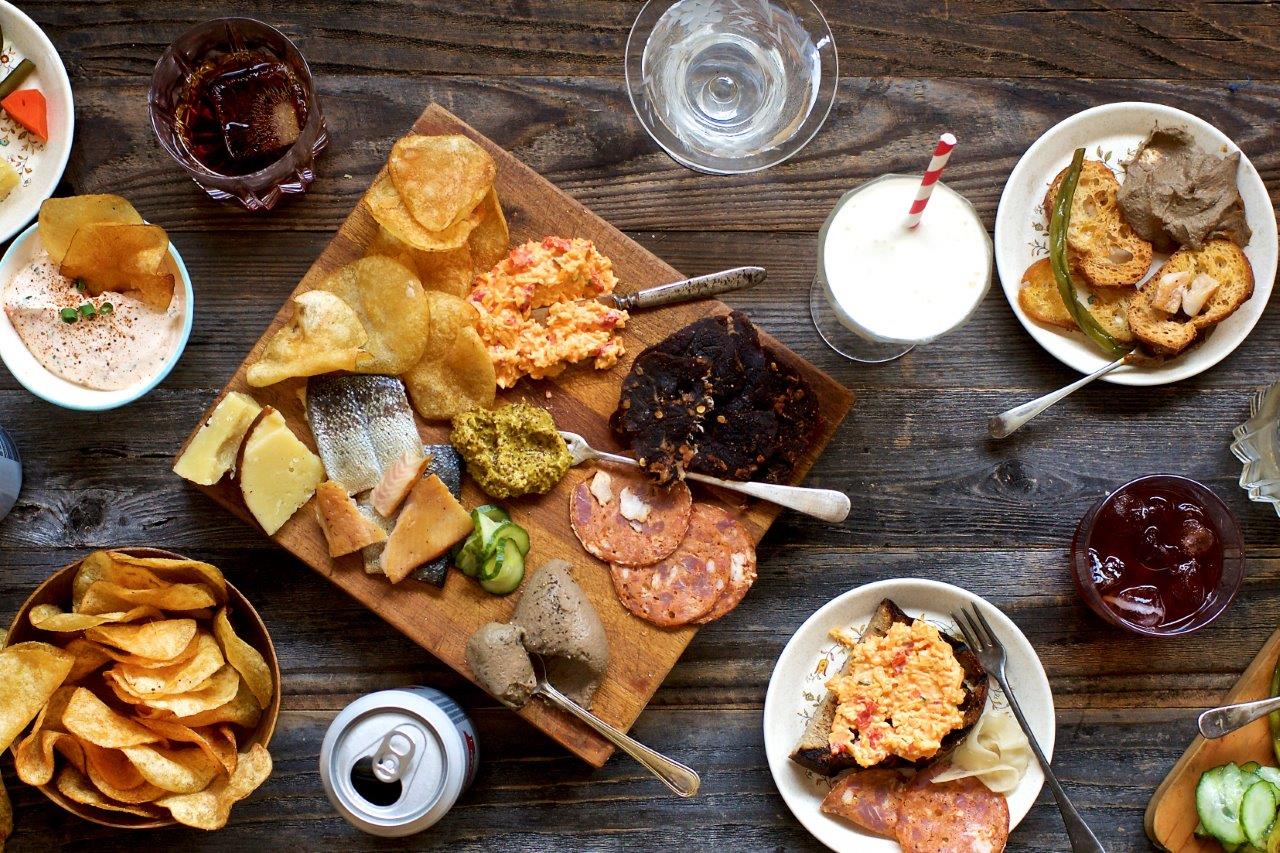Charcuterie and other food boards are popular in restaurants everywhere—with good reason—but making them at home can be almost as easy and just as satisfying.
For restaurants, “boards” are a great way to highlight that they walk the walk of paying attention to detail and making dishes from scratch. That may include their own in-house curing of meats, making their own mustard or pickles, or using the best sourced local ingredients and taking care as to how those ingredients complement one another.
For diners, charcuterie and other food boards make dining out fun. Sharing a plate of varied and small treats from the same board is festive. Barriers are broken down when you have hands in the same plate. Boards make for great conversation and it’s always interesting to hear who likes what best. And what could make you a better dining partner than giving someone that last bit of their favorite cheese on the board?
Charcuterie and Other Food Boards At Home
For home entertaining, boards should be a staple menu item. In my house, they’ve always been a go-to family meal as well, either as a starter or the whole meal. I like the creativity. I like how they’re composed of what I have on hand in the frig and pantry, have purchased, and what I’ve made from scratch. And I like it that no two are ever alike.
So I was thrilled to see that John Gorham and Liz Crain’s second cookbook together, Hello! My Name is Tasty: Global Diner Favorites From Portland’s Tasty Restaurants, devotes an entire section to boards. They create a Southern Board, Breakfast Board, Smoked Trout Board, and Pickle Board, and do a marvelous job of showing just how versatile and easy boards can be.
Here, we share a few recipes you can use in putting together your own charcuterie and other food boards.
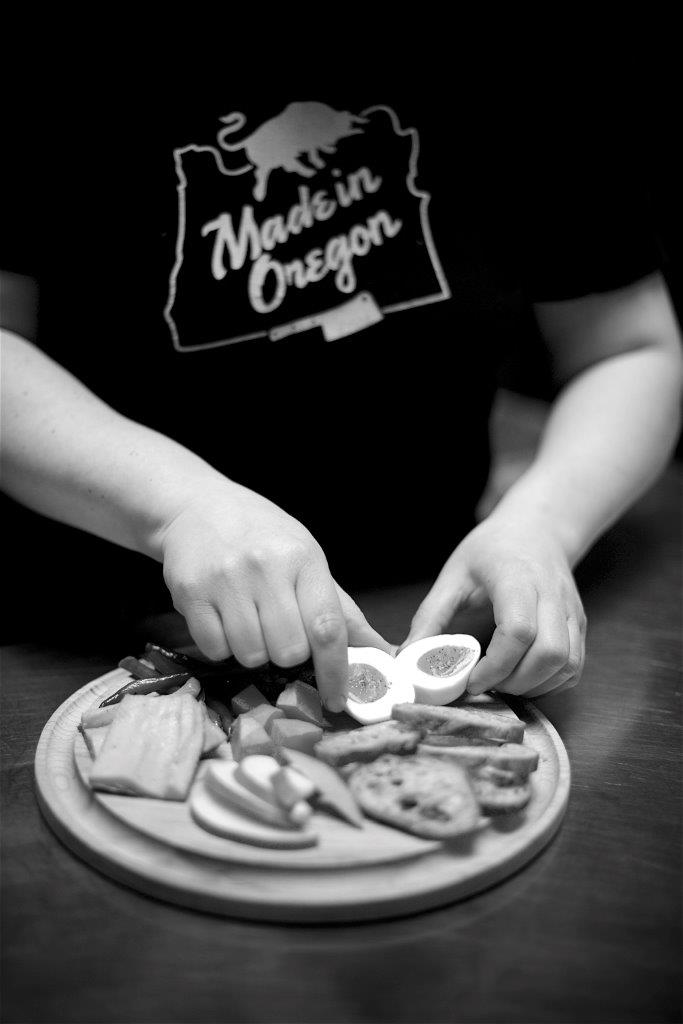
The Tasty restaurants are located in Oregon but include global dishes and diner favorites. (Photo by David L. Reamer)
Thanks so much to cookbook authors John Gorham and Liz Crain for sharing these recipes!
Excerpt and Recipes From Hello! My Name is Tasty:
Love Your People and Make a Proper Board.
My wife, Renee, and I have a very open-door, welcoming household, and we always try to have a few things that you can quickly put out for people when they stop by—things like pistachios, favas, olives and cheese, bread and crackers. There’s also always a big bowl of fruit in our kitchen.
It’s important for us to be able offer visitors a glass of wine or water and put a few snacks out, or compose a nice board, any day of the week. In terms of a good breakfast board, I always think back to Germany and the two weeks I spent there in 2007 outside of Mannheim and in Munich and Frankfurt visiting my oldest daughter Ruby’s extended family. I’ve always innately had the hospitality aspect of having a spread of food set out for friends and family, but for breakfast in Germany there would always be coffee and multiple boards of salami, cheese, bread, mustard, pickles, and more. In other words, they take the board to a whole other level.
Some solid gold things to have at home to make up your own boards include: hardboiled eggs, various cheeses, cured meats and seafoods, jerky, pâtes and terrines, mustards, pickles, basically all of the things that go well in or with Bloody Marys.
We also feature recipes found elsewhere in the book in our board suggestions, including Bacon Jam), Labneh (page 22), Toro Bravo Aioli (page 67), Six-Minute Eggs (page 199), and niçoise potatoes (page 63).

Boards can combine homemade items, pantry staples and homemade dishes. (Photo David L. Reamer)
A Few Board Recipes from Hello! My Name is Tasty:
Pimento Cheese
Pimento cheese is one of my favorite board treats. In the South you find it absolutely everywhere, and the key to a great pimento cheese is a great mayo. For us and in the South, that means Duke’s Mayonnaise—a super salty and tangy, apple cider vinegar mayo. Duke’s is king when we aren’t making our own.
Pimento cheese is basically a way to stretch cheese by softening it. I didn’t like it as a kid because I think I assumed it was spicy due to the pimiento peppers, which of course aren’t spicy at all. Maybe I didn’t like it simply because it was always around. In the South most refrigerators have a container of homemade pimento cheese in them at all times. It’s basically the sandwich spread of choice down there—like mayonnaise.
The dirtiest (and some would say best) thing to do with this stuff is to make fried bologna grilled pimento cheese sandwiches.
Make one quart.
Ingredients:
- 1 pound yellow medium cheddar cheese, grated (I really like Wisconsin cheddars)
- 4 ounces cream cheese (we use Philadelphia)
- ½ cup Duke’s Mayonnaise
- ¼ cup Pickled Zucchini brine (page 130) [Editor note: Recipe not included here. If you don’t have the book, use pickle juice from a jar in your own frig.]
- ½ teaspoon Crystal Hot Sauce or Texas Pete Original Hot Sauce
- ½ teaspoon kosher salt
- ¼ teaspoon sugar
- ⅛ teaspoon ground cayenne
- ⅛ teaspoon sweet smoked Spanish paprika
- ⅛ teaspoon finely ground white pepper
- 12 ounces fresh pimiento peppers, roasted, peeled, and finely diced, or 3 (4-ounce) jars diced peeled pimientos
- ¼ cup finely diced Pickled Zucchini (page 130)
Instructions:
- In the bowl of a stand mixer fitted with the paddle attachment (or in a large mixing bowl with a wooden spoon), combine everything but the pimientos and pickled zucchini and mix on low speed for 2 to 3 minutes, or until all ingredients are fully incorporated.
- Fold in the pimientos and pickled zucchini by hand, transfer to a medium bowl, and serve with crackers and crudités. The spread can be stored in an airtight container in the refrigerator for up to 1 week.
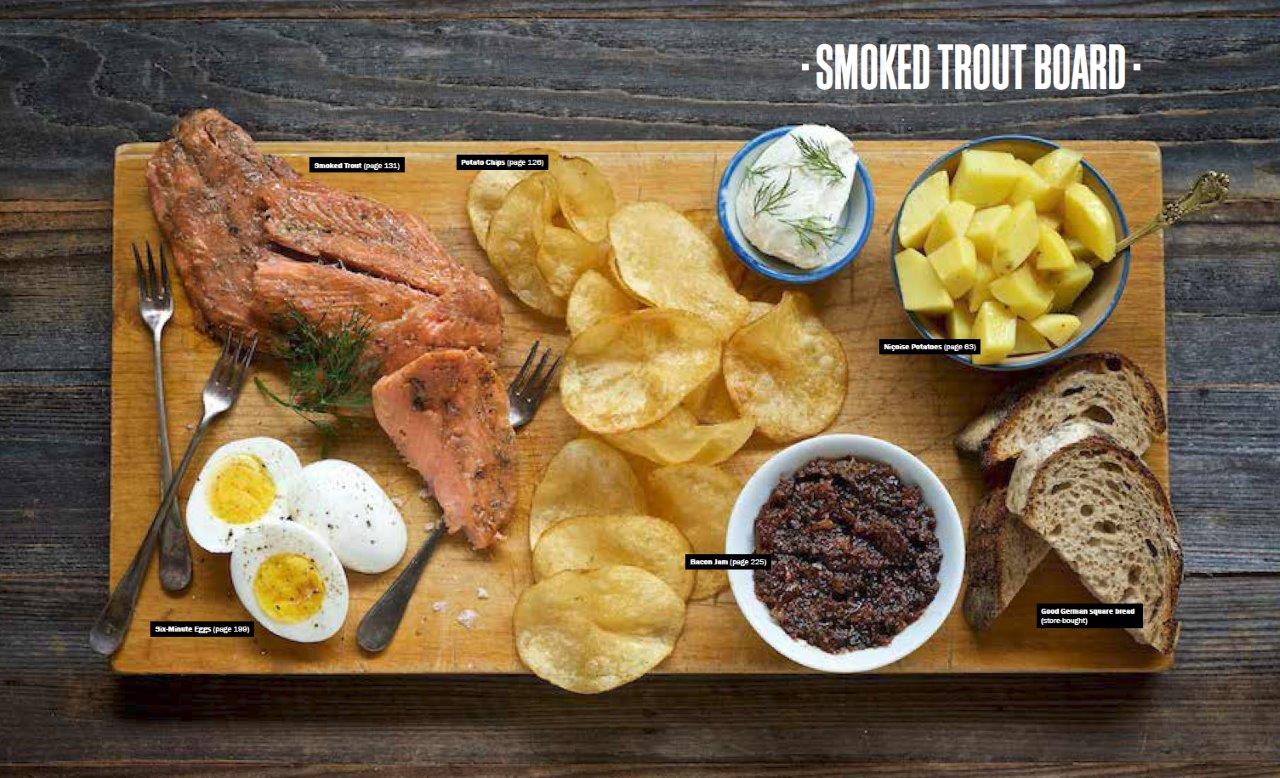
Smoked Trout Board. (Photo David L. Reamer)
Six Minute Eggs
These are super-simple medium-boiled eggs that go into not only our radicchio salad, but also our Salad Niçoise and a few of our boards. They are also the base for the picked eggs in our Burmese Red Pork Stew with Rice and Eggs. This conservative cook time leave the whites nice and pliable and the yolks creamy and soft.
Makes 6 eggs.
Ingredients:
- 6 eggs
- Ice water
Instructions:
- Place the eggs in a large pot and cover with at least 1 inch of cold water. Set the pot over medium-high heat and as soon as the water reaches a simmer, keep your eyes on it. As soon as it changes to a rolling boil, turn off the burner and start a 6-minute timer. If you over boil the eggs here, they will get chalky and yucky. When the timer goes off, use a slotted spoon to immediately transfer the eggs into ice water to cool. Once fully cooled, peel the eggs under cold running water.
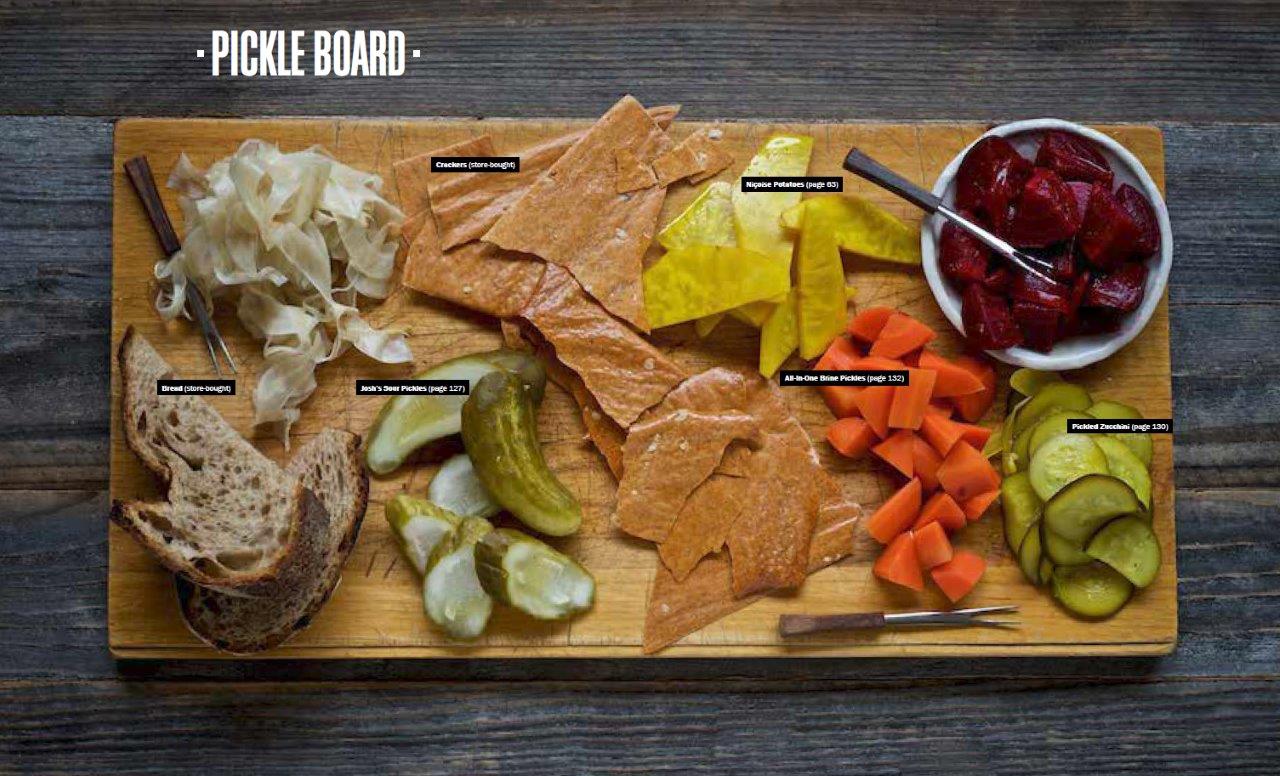
Pickle Board. A Board doesn’t have to include meat, fish or cheese. (Photo David L. Reamer.)
Tasty Whole Grain Mustard
I’ve always had a thing for making fresh mustards, and this one is inspired by a homebrew recipe I came across a while back that I loved for its simplicity. Not cooking the mustard seeds make it so that you get really big bursts of flavor from them. So many restaurant mustards out there are rushed and cooked quickly at too high temperatures, resulting in bitter mustards.
Sometimes good things just take time and this is certainly one of those good things.
Our mustard needs thirty days to develop, but you don’t have to do anything to it during that time. It’s just hanging out in your refrigerator. As for the alcohol, you can make this mustard with a sweet sherry or experiment with other alcohols and beers, but I prefer a smooth stout such as Guinness. Since hops in beer affect food a lot, you definitely want to avoid using something like a hoppy porter.
Makes about 2 ¼ cups.
Ingredients:
- 8 ounces stout (we prefer Guinness)
- 1 cup whole brown mustard seeds
- ¾ cup red wine vinegar
- 2 teaspoons kosher salt
- 1 teaspoon freshly ground
- black pepper
- Pinch of ground cinnamon
- Pinch of ground nutmeg
- Pinch of ground allspice
Instructions:
- In a 1-quart glass container with a tight-fitting lid, stir together all of the ingredients and then refrigerate for 30 days.
- After the 30 days, scrape the mustard into the bowl of a food processor and puree it for 5 to 10 minutes, or until it reaches the desired consistency. It’s best to process the mustard in 2- to 4-minute increments and let the food processor rest for a few minutes between to prevent overheating.
- The mustard is ready to use immediately or can be stored in an airtight container in the refrigerator for up to 2 months.
Enjoy these recipes and enjoy the tactile and culinary experience of putting together your own charcuterie and other boards. As John Gorham says, “Your people will thank you!”
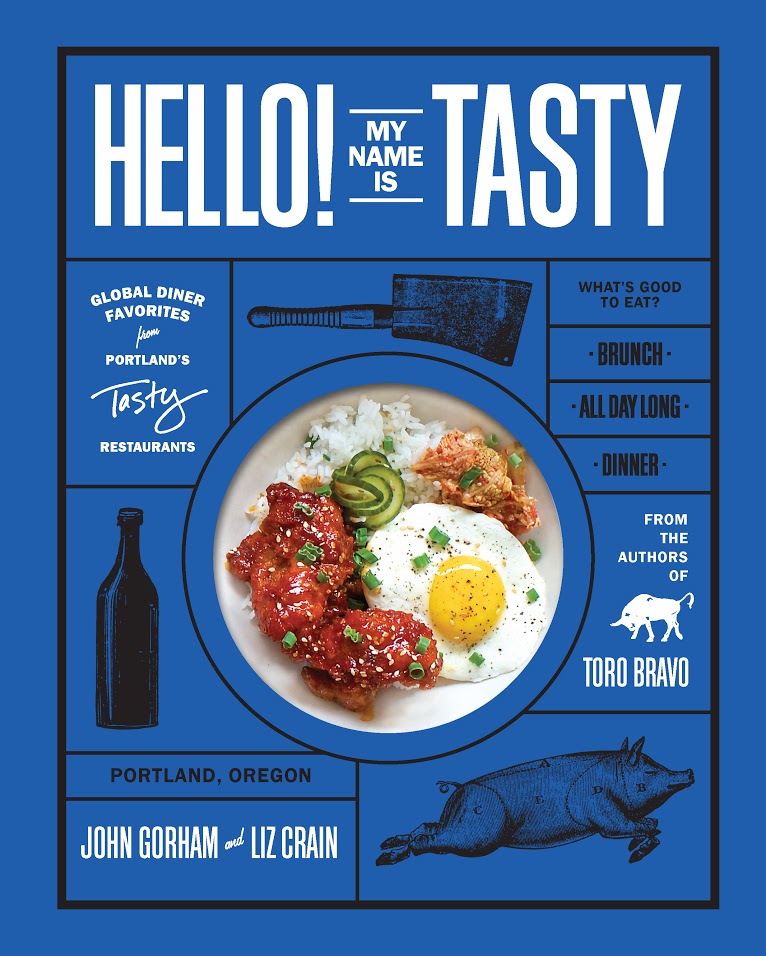
Hello! My Name is Tasty: Global Diner Favorites From Portland’s Tasty Restaurants
For More:
- Hello! My Name is Tasty, www.sasquatchbooks.com/book/hello-my-name-is-tasty
- Liz Crain, www.lizcrain.com/
- Tasty n Sons, www.tastynsons.com/
- Tasty n Alder, www.tastynalder.com/
- Toro Bravo, Inc., owners of the Tasty restaurants (including the soon-to-open new McMinnville restaurant, Tasty on Third), www.torobravoinc.com/#gastronomic-society-1
- Read about another venture from the owners of the Tasty restaurants on our site, www.confettitravelcafe.com/la-ruta-pdx-spanish-cuisine-portland/
- See our review of the cookbook.
-All photos by David L. Reamer. All recipes courtesy of John Gorham and Liz Crain, from Hello! My Name is Tasty: Global Favorites From Portland’s Tasty Restaurants.

